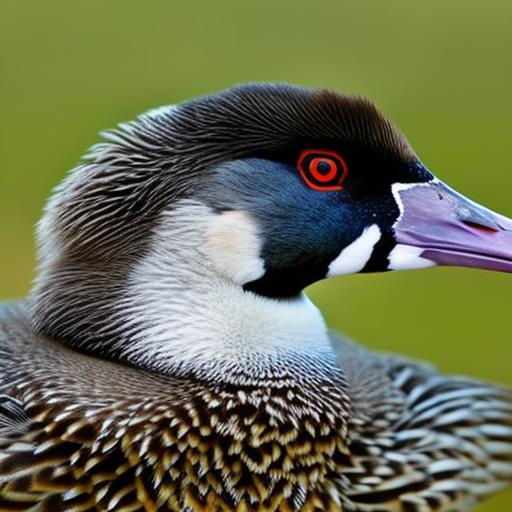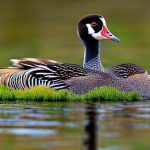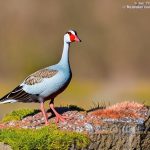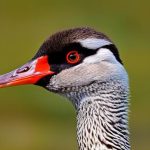Geese have been domesticated for thousands of years, with evidence of their presence dating back to ancient Egypt and China. These birds were initially kept for their meat, feathers, and eggs, but over time, they have also become popular as pets and for ornamental purposes. Geese are known for their strong instincts, adaptability, and ability to thrive in various climates. They are also highly valued in agriculture for their ability to control pests and weeds, as well as their efficient grazing habits.
Key Takeaways
- Geese come in a variety of breeds, each with unique characteristics and purposes.
- Domesticated breeds of geese are typically larger and more docile than wild breeds.
- Wild breeds of geese are known for their strong migratory instincts and adaptability to different environments.
- Heavy breeds of geese are bred for their meat production and can weigh up to 30 pounds.
- Light breeds of geese are smaller and more agile, often used for egg production or as ornamental birds.
Domesticated Breeds of Geese
There are several popular domesticated breeds of geese, each with its own unique characteristics and uses. One such breed is the Toulouse goose, which is known for its large size and excellent meat quality. Toulouse geese have a calm temperament and are often raised for both meat and exhibition purposes.
Another popular domesticated breed is the Embden goose, which is one of the largest breeds of geese. They have a white plumage and are primarily raised for meat production. Embden geese are also known for their docile nature and make excellent pets.
The Chinese goose is another well-known domesticated breed. These geese have a distinctive knob on their beak and are often raised for their meat and feathers. Chinese geese are also known for their loud honking and make excellent guard animals.
Wild Breeds of Geese
In contrast to domesticated breeds, wild geese breeds are found in their natural habitats and have not been selectively bred by humans. There are several species of wild geese, including the Canada goose, the Greylag goose, and the Snow goose.
Wild geese breeds differ from domesticated breeds in terms of their behavior and physical characteristics. They are generally more wary of humans and have a stronger instinct for migration. Wild geese also tend to have a more varied diet, feeding on a combination of grasses, grains, and aquatic plants.
Heavy Breeds of Geese
Heavy breeds of geese are known for their large size and excellent meat quality. These breeds are typically raised for meat production and are valued for their high meat-to-bone ratio. Some popular heavy breeds include the Toulouse goose, the Embden goose, and the African goose.
Heavy breeds of geese require more space and feed compared to lighter breeds. They also have a slower growth rate and take longer to reach market weight. However, their size and meat quality make them highly desirable for meat production.
Light Breeds of Geese
Light breeds of geese are smaller in size compared to heavy breeds and are often raised for egg production. These breeds are known for their high egg-laying capacity and efficient feed conversion. Some popular light breeds include the Chinese goose, the Pilgrim goose, and the Sebastopol goose.
Light breeds of geese require less space and feed compared to heavy breeds. They also have a faster growth rate and reach maturity earlier. While they may not have the same meat quality as heavy breeds, their egg-laying capacity makes them valuable for egg production.
Ornamental Breeds of Geese
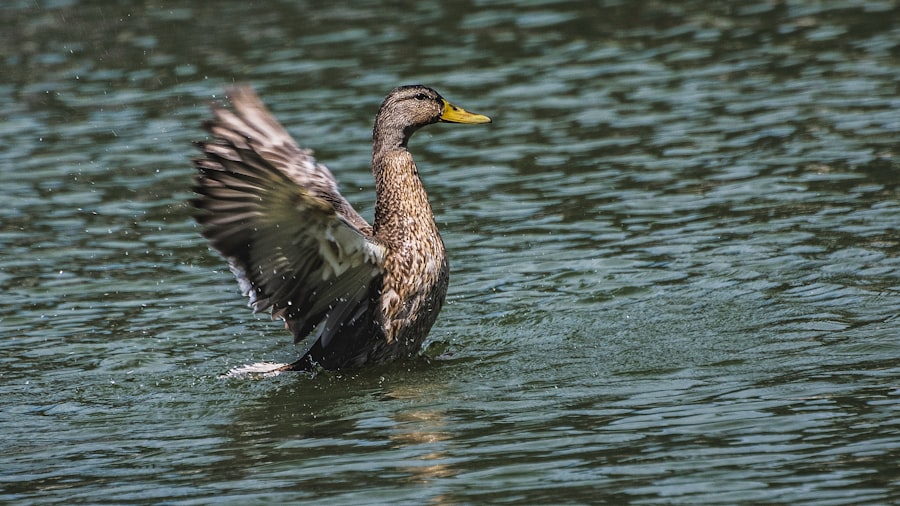
Ornamental breeds of geese are primarily kept for their aesthetic appeal rather than for meat or egg production. These breeds often have unique plumage patterns or physical characteristics that make them visually striking. Some popular ornamental breeds include the Sebastopol goose, the Pilgrim goose, and the Egyptian goose.
Ornamental breeds of geese are often kept as pets or for exhibition purposes. They require special care and attention due to their unique physical characteristics. While they may not have the same practical uses as other breeds, their beauty and charm make them highly sought after by enthusiasts.
Dual-Purpose Breeds of Geese
Dual-purpose breeds of geese are versatile breeds that can be raised for both meat and egg production. These breeds are valued for their ability to provide a balance between meat and egg production, making them ideal for small-scale farmers or homesteaders. Some popular dual-purpose breeds include the Pilgrim goose, the American Buff goose, and the Steinbacher goose.
Dual-purpose breeds of geese require moderate space and feed compared to heavy or light breeds. They have a good meat-to-bone ratio and also lay a respectable number of eggs. These breeds offer a practical solution for those looking to maximize both meat and egg production.
Rare Breeds of Geese
Rare breeds of geese are breeds that are at risk of extinction due to declining population numbers. These breeds often have historical or cultural significance and are important for preserving genetic diversity. Some rare breeds of geese include the Cotton Patch goose, the Shetland goose, and the Pilgrim goose.
Preserving rare breeds of geese is crucial for maintaining genetic diversity within the species. These breeds may have unique traits or adaptations that could be valuable in the future. By supporting and promoting rare breeds, we can ensure their survival for future generations.
Geese Breeds for Meat Production
When it comes to meat production, certain geese breeds are more suitable than others. Heavy breeds such as the Toulouse goose, Embden goose, and African goose are known for their large size and excellent meat quality. These breeds have a higher meat-to-bone ratio and produce tender, flavorful meat.
Meat-producing geese breeds require ample space to roam and graze. They also require a balanced diet that includes a combination of grasses, grains, and supplemental feed. Proper nutrition and care are essential for ensuring optimal growth and meat quality.
Geese Breeds for Egg Production
For those interested in egg production, certain geese breeds are better suited than others. Light breeds such as the Chinese goose, Pilgrim goose, and Sebastopol goose are known for their high egg-laying capacity. These breeds lay a respectable number of eggs and have efficient feed conversion.
Egg-producing geese breeds require adequate nesting areas and access to clean water for bathing. They also benefit from a balanced diet that includes a combination of grains, greens, and supplemental feed. Providing proper nutrition and care will ensure optimal egg production and quality.
In conclusion, geese come in a variety of breeds, each with its own unique characteristics and uses. Whether you are looking for meat production, egg production, ornamental purposes, or simply a pet, there is a breed of geese that will suit your needs. It is important to choose the right breed based on your specific requirements and resources. By understanding the different breeds and their uses, you can make an informed decision and ensure the success of your geese venture.
If you’re interested in learning more about different breeds of geese, you might also find this article on Poultry Wizard fascinating. It discusses whether geese can eat chicken feed and provides valuable insights into their dietary needs. Understanding what geese can and cannot eat is crucial for their overall health and well-being. To read the full article, click here: Can Geese Eat Chicken Feed? Additionally, if you’re considering raising both geese and chickens together, Poultry Wizard has a helpful guide on chicken coop portage that you might find useful. Check it out here: Chicken Coop Portage. Lastly, if you’re looking for ways to keep your chicken coop warm during colder months, Poultry Wizard offers insights on choosing the right heater for a chicken coop. Find out more by clicking here: Heater for a Chicken Coop.
FAQs
What are the different breeds of geese?
There are many different breeds of geese, including Toulouse, Embden, African, Chinese, and Canada geese.
What is the difference between Toulouse and Embden geese?
Toulouse geese are larger and have a more rounded body shape, while Embden geese are slightly smaller and have a more streamlined body shape. Toulouse geese also have a more prominent dewlap (the loose skin under their chin) than Embden geese.
What is unique about African geese?
African geese are known for their loud honking calls and their distinctive knob on their beak. They are also larger than many other breeds of geese.
What is the origin of Chinese geese?
Chinese geese are believed to have originated in China over 2,000 years ago. They were originally bred for their meat and eggs, but are now also kept as pets and for ornamental purposes.
What is the habitat of Canada geese?
Canada geese are found throughout North America, and can be found in a variety of habitats including lakes, rivers, and wetlands. They are also commonly found in urban areas such as parks and golf courses.
Meet Walter, the feathered-friend fanatic of Florida! Nestled in the sunshine state, Walter struts through life with his feathered companions, clucking his way to happiness. With a coop that’s fancier than a five-star hotel, he’s the Don Juan of the chicken world. When he’s not teaching his hens to do the cha-cha, you’ll find him in a heated debate with his prized rooster, Sir Clucks-a-Lot. Walter’s poultry passion is no yolk; he’s the sunny-side-up guy you never knew you needed in your flock of friends!

